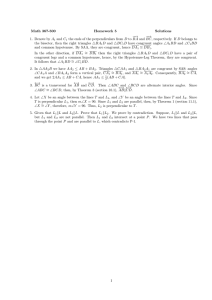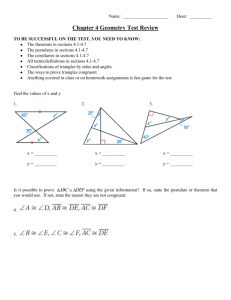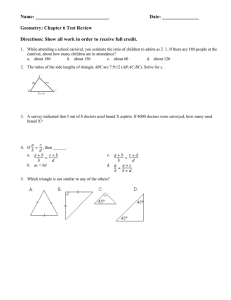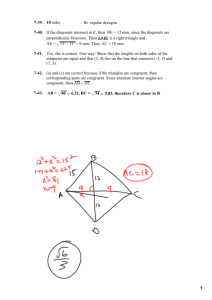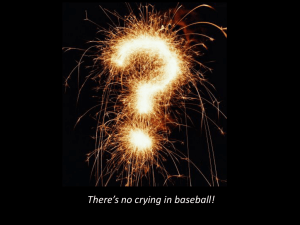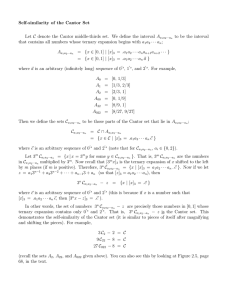4.1 4A BA and 4C A ∼
advertisement
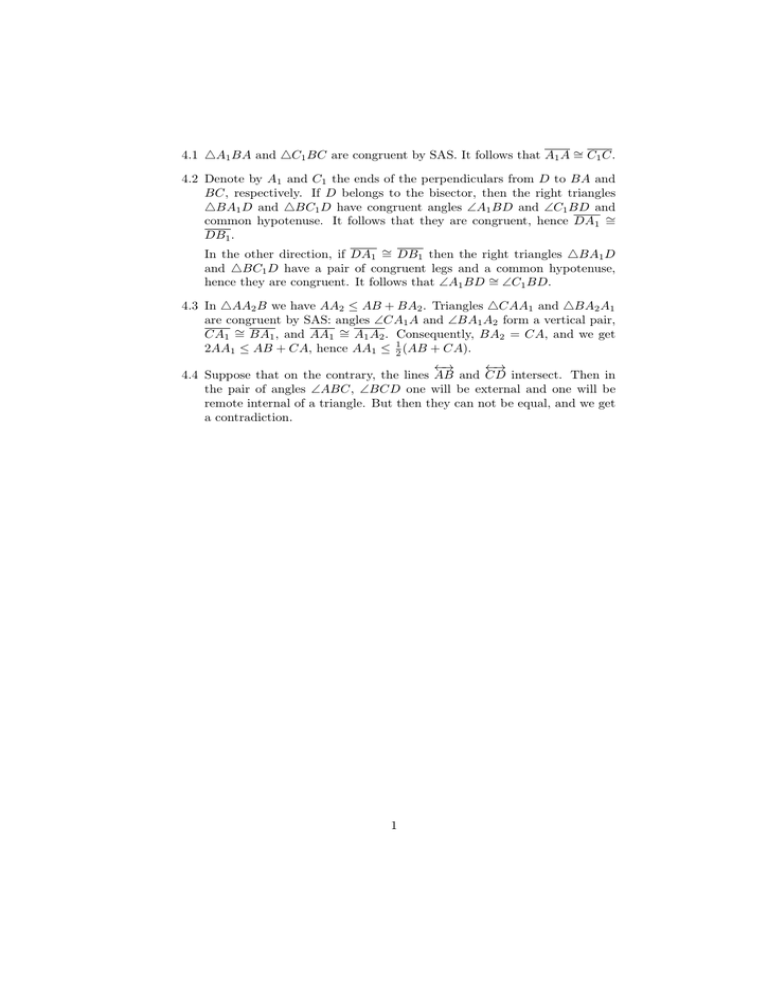
4.1 4A1 BA and 4C1 BC are congruent by SAS. It follows that A1 A ∼ = C1 C. 4.2 Denote by A1 and C1 the ends of the perpendiculars from D to BA and BC, respectively. If D belongs to the bisector, then the right triangles 4BA1 D and 4BC1 D have congruent angles ∠A1 BD and ∠C1 BD and common hypotenuse. It follows that they are congruent, hence DA1 ∼ = DB1 . In the other direction, if DA1 ∼ = DB1 then the right triangles 4BA1 D and 4BC1 D have a pair of congruent legs and a common hypotenuse, hence they are congruent. It follows that ∠A1 BD ∼ = ∠C1 BD. 4.3 In 4AA2 B we have AA2 ≤ AB + BA2 . Triangles 4CAA1 and 4BA2 A1 are congruent by SAS: angles ∠CA1 A and ∠BA1 A2 form a vertical pair, CA1 ∼ = BA1 , and AA1 ∼ = A1 A2 . Consequently, BA2 = CA, and we get 2AA1 ≤ AB + CA, hence AA1 ≤ 12 (AB + CA). ←→ ←→ 4.4 Suppose that on the contrary, the lines AB and CD intersect. Then in the pair of angles ∠ABC, ∠BCD one will be external and one will be remote internal of a triangle. But then they can not be equal, and we get a contradiction. 1
